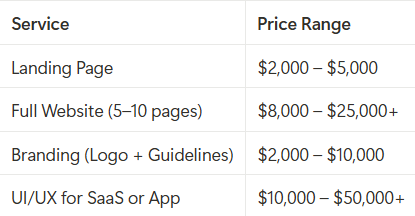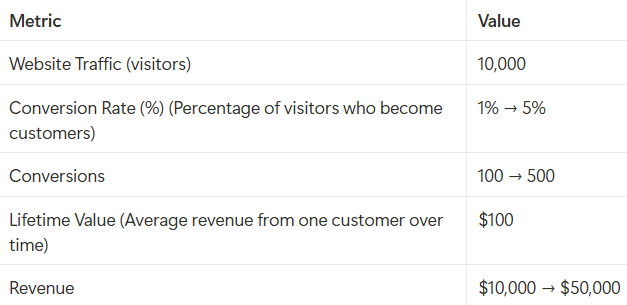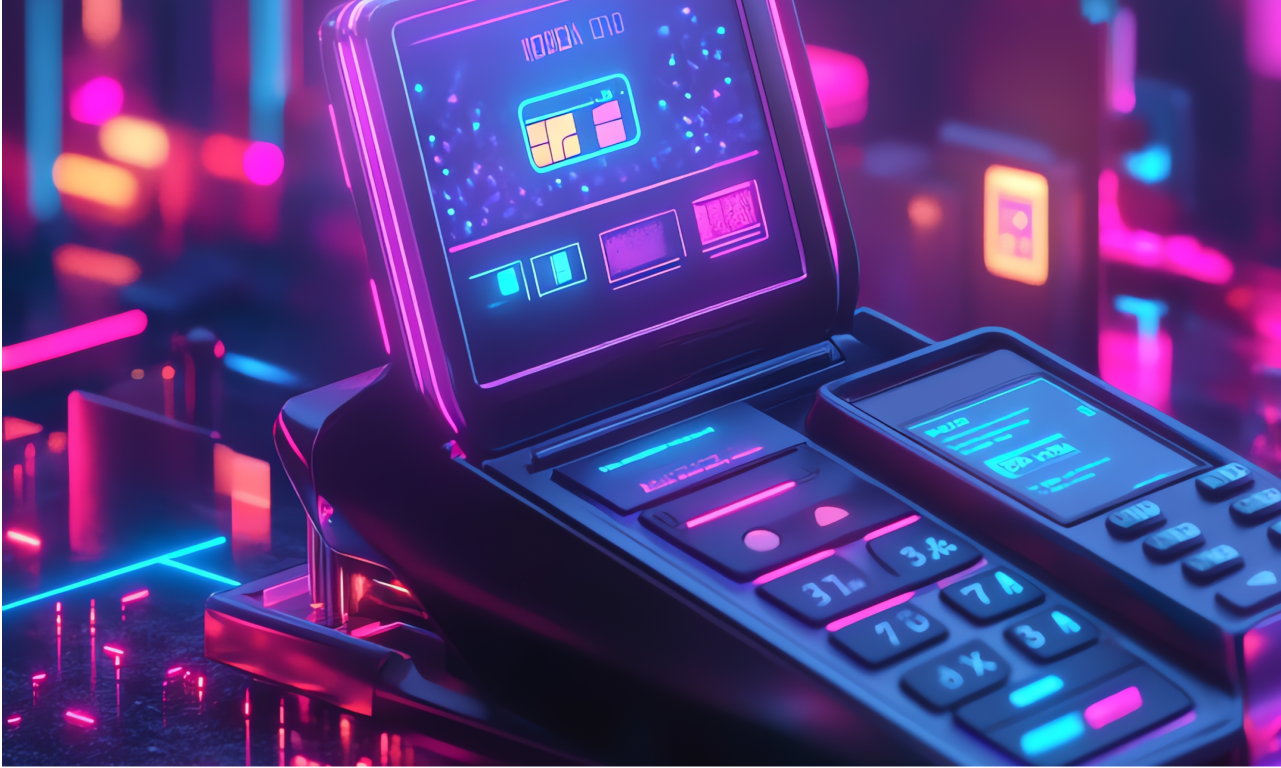How to Choose Best Design Agency in 2025: A Complete Guide for Businesses and Startups

Looking for a reliable design agency in 2025? This article covers selection criteria, examples, pricing comparisons, and tips to avoid picking the wrong contractor.
Why Choosing a Design Agency Is Critical in 2025
In 2025, great design isn’t a bonus. It’s a survival requirement.
Seriously - you might have a genius product, the best price on the market, even an amazing team. But if your website looks like it’s from 2015, and your branding inspires nothing but a shrug - people won’t stay. They’ll close the tab. They’ll go to your competitor who speaks the language of modern interfaces, packs meaning into every pixel, and has a clear and logical site structure.
So, what happened?
The world changed. Clients got used to Netflix, Apple, Figma, Airbnb - brands where design isn’t just “pretty” but intuitive, logical, and starts talking to you before you even know what you're looking for. And here’s the most interesting part: design agencies are changing too. Some still think in outdated templates. Others are shaping the market of the future.
So how do you avoid the trap of beautiful slides and pick a team that will actually elevate your brand?
This article is all about practice, no fluff. You’ll get a full checklist, concrete examples, hidden pitfalls, and tips you can apply right now.
This isn’t just a manual - it’s your roadmap to making a quality decision. And possibly the most important decision for a business that wants to grow.
What You Need to Know Before Searching for an Agency
Before you hit “send message” to any agency - pause. This is where most screw-ups happen: when a client isn’t clear on what they actually need, and the contractor is left guessing. The result? Revisions, frustration, and wasted weeks.
Start with a simple question: what do I want?
Do you just need a good-looking website? Or should it be a commercial tool that collects leads, sells, and builds your image? Maybe it’s a brand redesign, a new mobile app, or a full visual system for a startup? Clearly define your request: what exactly do you need and, most importantly - why. The “why” is what opens the eyes - yours and the designer’s.
Define your goals.
Design isn’t decoration, it’s a tool. Do you want more brand recognition? Better conversions? A lower bounce rate? Or a new brand people trust from the first screen? These goals will serve as your and the agency’s compass at every stage.
Outline the scope.
Is it a landing page or a multi-page website? Branding with a full guideline? UI/UX for a SaaS platform? Maybe all of the above? Defining the project size from the start is absolutely critical. It lets you properly estimate timelines, budget, and the kind of team you’ll need.
Prepare a short brief or at least some references.
No need to write a 12-page treatise - sometimes a few screenshots from Pinterest and a line like “I want to reach this audience, but not in such a generic way” are already a great starting point. If you can’t put it into words yourself - no problem. A good agency will help pull it out of your head and turn it into a structure. But start with what you have.
This stage is like the foundation of a building. If it’s weak, everything else will crumble. But if you take the time and really think through your needs - the search for an agency will stop being a roulette and become a strategic choice.
Key Criteria for Choosing a Design Agency in 2025
Experience and Portfolio
You land on an agency’s website - and you see a gallery of beautiful images. Nice colors, modern typography, grids like on Dribbble. But is that what you actually need? No.
Because the purpose of a portfolio is not to impress but to show that the agency knows how to solve problems similar to yours.
What to look for:
- Relevance. Are there projects in the portfolio from your niche or similar in functionality/complexity?
- Obviously, if you want to launch a Crypto dApp with bridge, Swap, and Liquidity Staking functionality, examples of websites for coffee shop chains won’t help you. But keep in mind that many agencies don’t publish all their cases on the website due to volume, so it’s worth asking.
- Depth.
- Beyond the description of what was done, you need to dig deeper. What was the client’s request, what was delivered, what results were achieved? Also, subjectively assess whether the agency did a good job with UX, and whether you actually like how their cases look visually.
- Results.
- Want to see real expertise? Look for numbers: “increased conversion by 38%,” “reduced onboarding time by 50%.” Even if it’s not always about money - there should be a measurable result.
Niche and Expertise
In design, context is everything. And if your agency doesn’t understand that context - you’ll spend your time explaining instead of progressing.
That’s why experience in your niche is not just a bonus but a critically important factor.
Why? Because design for SaaS is not the same as design for e-commerce. Because fintech has different challenges than medtech. And because even colors, fonts, and behavioral patterns are perceived differently depending on the target audience.
Why niche experience matters:
- An agency that has already worked in your field knows what “good” looks like - not in general, but in your reality.
- They won’t be guessing what KYC is, what an onboarding flow means, or the difference between a cold wallet and a custodial solution.
- They’ll grasp the logic faster, avoid classic mistakes, and focus on the details that actually move your business forward.
At Inbuco, we have deep expertise in high-competition and complex niches such as:
- Crypto / Web3 - from token sale landing pages to UI/UX for dApps, wallets, blockchain analytics, and unique blockchain creation.
- SaaS - CRMs, productivity tools, analytics, AI platforms, and more niche products.
- HealthTech / MedTech - interfaces for clinics, medical systems, and patient portals.
- Finance / Banking - design for neobanks, investment platforms, and financial support services.
- E-commerce - high-conversion UIs, branding, mobile optimization, and CRO focus.
- EdTech - learning platforms, personal dashboards, LMS systems.
- Real Estate / PropTech - UX for real estate platforms, booking, visualization.
- Supply Chain
Specialization = depth.
In each of these areas, we didn’t just draw - we solved problems: improved retention, reduced churn, launched new products in competitive markets.
So when you’re looking for a design partner, ask:
“Have you worked on projects similar to ours?”
And don’t just listen for “yes/no,” but how they did it, what results they achieved, and what they learned from those projects.
Team and Processes
In 2025, chaos is no longer a style. A professional agency has a transparent process, which typically looks like this:
- Kickoff session: business goals breakdown, client interview, vision alignment.
- Research: market, competitor, and target audience analysis.
- UX frameworks and prototypes: no fluff - just logic and user scenarios.
- UI concepts: colors, fonts, visual style. Approval of key screens.
- Final implementation + documentation: components, guidelines, handoff for development.
And all of this - not in chaotic PDF files - but in Figma, Notion, Slack, or another convenient system - with transparent statuses, comments, and deadlines.
At Inbuco, we always work as one team with a focus on results:
- Each project is led by a manager and an art director,
- We work via Figma, Notion, Slack, and hold weekly syncs with the client,
- Each stage has a clear deadline and measurable outcome.
No surprises, no “we’ll think a bit more.”
So when choosing an agency - don’t be afraid to ask a simple but important question:
“What will our working process look like and who exactly will be involved?”
Because in the details - lies the difference between "just pretty" and "strategically powerful."
Pricing and Transparency
Price is always a delicate topic. But let’s be honest: in design, there’s no such thing as a “normal price” that fits everyone. It all depends on the scope of work, the team’s quality, the approach level - and most importantly - on the value you expect to receive.
1. Fix Price
You agree on a clear scope of work, set a price and deadline. Everything outside that scope - is discussed separately.
Best suited for:
- When you already have a prepared brief or a clear vision.
- Projects with a limited scope (landing page, brandbook, redesign of a few screens).
- You want a final price upfront without surprises.
Pros: predictability, budget control.
Cons: no flexibility - each change = additional payment.
2. Hourly
The team works at an hourly rate (typical agency rates range from $60-$140/h). You receive weekly or monthly reports with time tracking (usually via Harvest, Toggl, Clockify, etc.).
Best suited for:
- Dynamic projects with many changes.
- You want to work in sprints and gradually adjust or add tasks.
- There are no strict limits or you’re looking for a long-term partner.
Pros: flexibility, quick adaptation to new requirements.
Cons: harder to predict the final budget.
3. Time & Materials (T&M) - hybrid model
How it works:
A mix of fixed and hourly models. You have a base budget + hourly pay for changes or new tasks. For example, the website costs $12,000, but all iterations beyond the base scope - $60/hour.
Best suited for:
- Projects with a base scope, but where changes are likely.
- You don’t want to overpay “just in case” but still want flexibility.
Pros: balance between stability and freedom.
Cons: requires clear communication and reporting.
Typical Budgets in 2025 (US/Europe):

Prices depend on the agency's level, project complexity, and depth of involvement.
Cheap ≠ Profitable
Someone might promise to make you a full high-conversion landing page for $700 - but somehow it won’t actually convert.
Or, as often happens, you’ll end up writing the copy yourself, setting the structure, explaining three times why the CTA should be higher - and get something that “kind of works.” And then you’ll go redo it anyway.
The main value of a design agency is not just to make a pretty picture, but to create a design that works and brings results. You’re paying for experience and outcome, not just hours. When choosing a contractor, don’t just look at the price - look at the impact of design on the business: poor design can lead to lost clients, low conversion, and reputational risk.
You can calculate the value yourself with this example:

This is the simplest example, but thetorically - would you pay $10,000 for a website like that?
Where to Find a Design Agency in 2025: Google Isn’t the Only Answer
When you start searching for a design partner, it’s tempting to open Google and type “top design agencies” - maybe that’s even how you found this article (ha-ha). But… you don’t need the loudest one - you need the one that solves your specific problem. And here it’s crucial to know where to search and how to read between the lines.
In 2025, there are several core platforms and channels to find design agencies. Each has its own audience, specifics, and risks.
Clutch
A directory of agencies with global ratings, case studies, and verified reviews.
Pros:
- All companies go through verification.
- You can filter by niche, tech stack, and budget.
- Real client interviews are published.
Cons:
- Many inflated profiles - ratings can be bought.
- It’s not always easy to evaluate the real team - everything looks too polished.
- The platform heavily promotes paid profiles, making it harder to find good agencies organically.
Behance / Dribbble
Creative platforms with design portfolios.
Pros:
- Easy to assess visual style.
- You can find unconventional or niche designers.
- Agencies often share full case studies with process breakdowns.
Cons:
- Very little info about workflows, results, or methodology.
- Lots of “shiny” work that looks cool but lacks business focus.
- No rating system or client feedback tools.
A professional social network that lets you reach out directly to teams or agencies.
Pros:
- You can see the actual team.
- You can check mutual connections, references, and community involvement.
Cons:
- Less structured information.
- Harder to evaluate cases without dedicated landing pages or decks.
Other channels still working well in 2025:
- Design communities
- Personal recommendations
Red Flags That an Agency Isn’t Right for You
Empty or weak portfolio
If case studies look generic, lack context, explanations, or results - it’s a red flag.
“Here are a few screens” - is not a case study.
Ask: What was done, why this approach, and how did it affect the client’s business?
If there’s no answer - there might not be any real experience.
Vague or blurry answers
If simple questions (price, timeline, process) get you a lot of words but little clarity - be cautious.
Professionals speak to the point, don’t dodge hard questions, and don’t sell “design magic” - they explain how results are achieved.
Lack of clear documentation
No contract, no clear stages, no timeline, no technical brief, no file handoff format - that’s chaos. And where there’s chaos in the process - there will be chaos in the outcome.
Even small projects need structure: stages, deadlines, scope, who does what.
But the biggest red flag? No questions for you.
It’s subtle but critical. If the designer doesn’t ask: "Who, what for, why, for whom, etc." - they don’t care. They don’t want to understand - they want to sell.
Remember: good design is about results, not just visuals.
Top 10 Questions to Ask Before Choosing a Design Agency
- How do you usually approach the start of a project?
- How will you understand my business and target audience?
- Can you show a similar project and explain why the solutions were effective?
- Who will be involved, and who is my main point of contact?
- What does your typical process look like?
- How do you handle reporting and communication?
- What is included in the budget, and what is billed separately?
- What happens if the project is delayed or we want to change the scope?
- What does the final handoff include - is a guide/documentation part of it?
- How do you measure the success of your work?

How to Make an Informed Decision
Not every design works. Not every team knows how to listen, think, and build interfaces that actually impact the business: increase conversions, build trust, and highlight uniqueness.
And that’s the difference between “we made a website” and “we built the gateway to your business.”
So weigh not the cover, but the approach. Not the style - but the result. Not the price - but the value.
Ready to Do It Right?
At Inbuco, we don’t just create “pretty” visuals - we build design that thinks, solves problems, and scales with you.
Our core focus areas: Web3, SaaS, HealthTech, FinTech, E-commerce, EdTech.
We dive deep into the product, develop strategy, and deliver not just mockups - but solutions that work.
Leave a request and we’ll hold a free strategic session, where we will:
- Analyze your challenge,
- Show relevant case studies,
- Propose the optimal format for collaboration.
Let’s build together!








